When I first started growing vegetables for self-sufficiency, I made every blunder in the book. I meticulously researched varieties, planned garden layouts, and worked my but off trying to keep dozens of different varieties alive… only to end up with more zucchini than our entire village could eat and not nearly enough of the other vegetables and legumes I had planted.
While learning from our mistakes and gradually figuring out what really works for us is part of what this life is about… I’m happy to share what I know and what I’ve learned so you can at least avoid some of the missteps I’ve made. Here’s what I learned about starting a productive home garden – including the face-palm moments.
First Things First: Assessing Your Growing Space
Before we dive into specific vegetables, take the time to assess about your growing conditions:
- Your growing season and frost dates (these matter more than those enticing seed catalog descriptions)
- Available sunlight throughout the season
- Soil quality – a soil test might not be Instagram-worthy, but it’s worth every penny
- Water availability – both natural rainfall and the water you’ll have available during dry spells
- Space constraints – that pumpkin vine will take over your entire garden if you let it!
Growing What You’ll Actually Use
Here’s where many of us trip up at first – myself included: we get caught up in the romance of growing everything under the sun, forgetting to ask ourselves some important questions.
- What does your family actually eat? Those purple carrots might look amazing, but will anyone eat them?
- How much work are you willing to put in? E.g. growing peas is great (and good for your soil), but who’s going to shell them?
- Do you enjoy preserving food? If so, which methods? – is it worth your effort growing hundreds of tomatoes so you can can dozens of jars of tomato salsa, when you could also buy salsa at the local shop – or barter with a neighbor?
- What’s readily available and affordable at local markets, maybe even dirt cheap during the growing season?
For instance, I’ve stopped growing cucumbers entirely. While we enjoy them from time to time, they’re incredibly cheap all through summer and our neighbors always have extras to share.
Type 1: High-Yield Crops
Let’s talk about the vegetables that really earn their keep in a self-sufficient garden…
Tomatoes: Your Garden’s MVP
Tomatoes are the heart of many gardens.
We grow multiple varieties because different types serve different purposes:
- Cherry tomatoes for salads and snacking
- Meaty varieties like ‘Coeur de Boeuf’ for sandwiches and roasting
- ‘Colgar’ types for long-term storage
- Sauce tomatoes for canning
- And yes, usually one or two “experimental” varieties just for fun!
Zucchini (Courgette): The Gift That Keeps on Giving
While they’re incredibly productive and versatile, two or three zucchini plants can feed a small army. I had half a dozen plants the first year and we ended up baking zucchini bread at least once a week, roasting zucchinis on the BBQ as often as possible, making zucchini soup for winter, and every guest would leave our house with a bag of zucchinis!
Lettuce: Quick Returns
Lettuce might seem boring, but it’s one of our most practical crops.
- Cut the leaves you need off, leave the rest of the plant for continuous harvest
- Plant in succession every few weeks
- Mix different varieties for interesting salads
- Consider heat-tolerant varieties for the summer
Type 2: Nutrition Powerhouses
When it comes to maximizing nutrition from limited space, these vegetables deserve special attention:
Spinach: a Versatile Green
Spinach might not be the most exciting crop, but it’s incredibly practical. We succession plant it throughout the season, using it in everything from morning smoothies to evening stir-fries. In reality, it’s one of the few vegetables that genuinely pulls double-duty as both salad green and cooking green.
Carrots: Worth the Wait
Here’s something no one tells you about carrots – they test your patience like no other vegetable. They’re slow to germinate, need consistent moisture, and take forever to size up. But when you pull that first perfect carrot from your own soil… there’s nothing quite like it.
(mind you, I also pull a couple of miniature carrots every single year. Fit for a leprechaun, and they’re fun for Instagram – not filling anyone’s belly though).
Bell Peppers: The Long Game
Bell peppers are another vegetable that will test your patience. They start slowly, but once they get going, they’re remarkably productive. We’ll harvest some great, and leave others on the plant until they turn red, yellow, or orange.
Type 3: Storage Crops for Winter
The following are great if you have a cool and dark space to store your vegetables – like a root cellar. We don’t really (our cellar gets dripping wet when it rains in October/November) so I’ll only grow enough of the veggies below to get us through Autumn 🙂
Potatoes: The True Staple
Potatoes might not be glamorous, but they’re the backbone of our winter food storage. We grow early varieties for the summer and early Autumn, but there’s a whole range of potato varieties you can choose from. You can even grow them in buckets, which is a lot of fun and saves water and space!
Onions: The Essential Flavor Base
Growing onions has been a journey of trial and error. Tips I swear by:
- Start them early indoors
- Plant plenty extra (they’re the base of practically every meal)
- Cure them properly for long-term storage
- Save the smallest ones for replanting
(Butternut) Squash: The Long-Keeper
Winter squash takes up space, but stays fresh for months. I love butternut squash and find it particularly reliable – it stores well and is versatile in the kitchen.
Type 4: Herbs and Microgreens
These small plants pack a big punch in terms of flavor and nutrition.
We grow:
- Basil – sometimes even multiple varieties, for the fun of it (and the pesto)
- Cilantro
- Parsley – it easily overwinters in our climate, and has started sprouting in the wild outside the garden too
- Mint – because once you plant it, there’s no going back. We’ve got multiple varieties for different purposes, and there’s a bunch growing in the chicken run as well.
3 Bits of Advice
If you’re just starting out, my #1 advice would be to start smaller than you think you should. If you focus on 4-5 vegetables you use frequently and add one or two experimental crops, that’s more than plenty!
#2 Advice would be to keep notes.
- Write down what you seeded/planted where (trust me, you won’t remember two weeks from now!)
- Keep track of when they sprout, how fast they grow, etc. I love experimenting with seeding indoors vs outdoors, or planting out some seedlings a couple of weeks before others – and just see (and track) what happens!
- Keep track of your numbers as well. How much did the seeds or seedlings cost? How many plants survived? How many veggies/fruits did you get from them? (approximately – I count in “one-few-many-lots” where lots means I get to give them away or barter)
#3 piece of advice: connect with other gardeners in your area. Exchange seeds, growing tips, borrow/share tools and machinery, and barter your harvest when you can!
In 10+ years of living off-grid in Spain (and growing some of our own food), I’ve learned to focus on growing what I’m good at… and buy or barter the rest. The reward isn’t just in being able to eat healthy, fresh food directly from the garden (although that is pretty rewarding!) – it’s in the daily connection with your plants and the satisfaction of problem-solving. And in that incomparable feeling you get coming in with a bucket full of home-grown veggies.

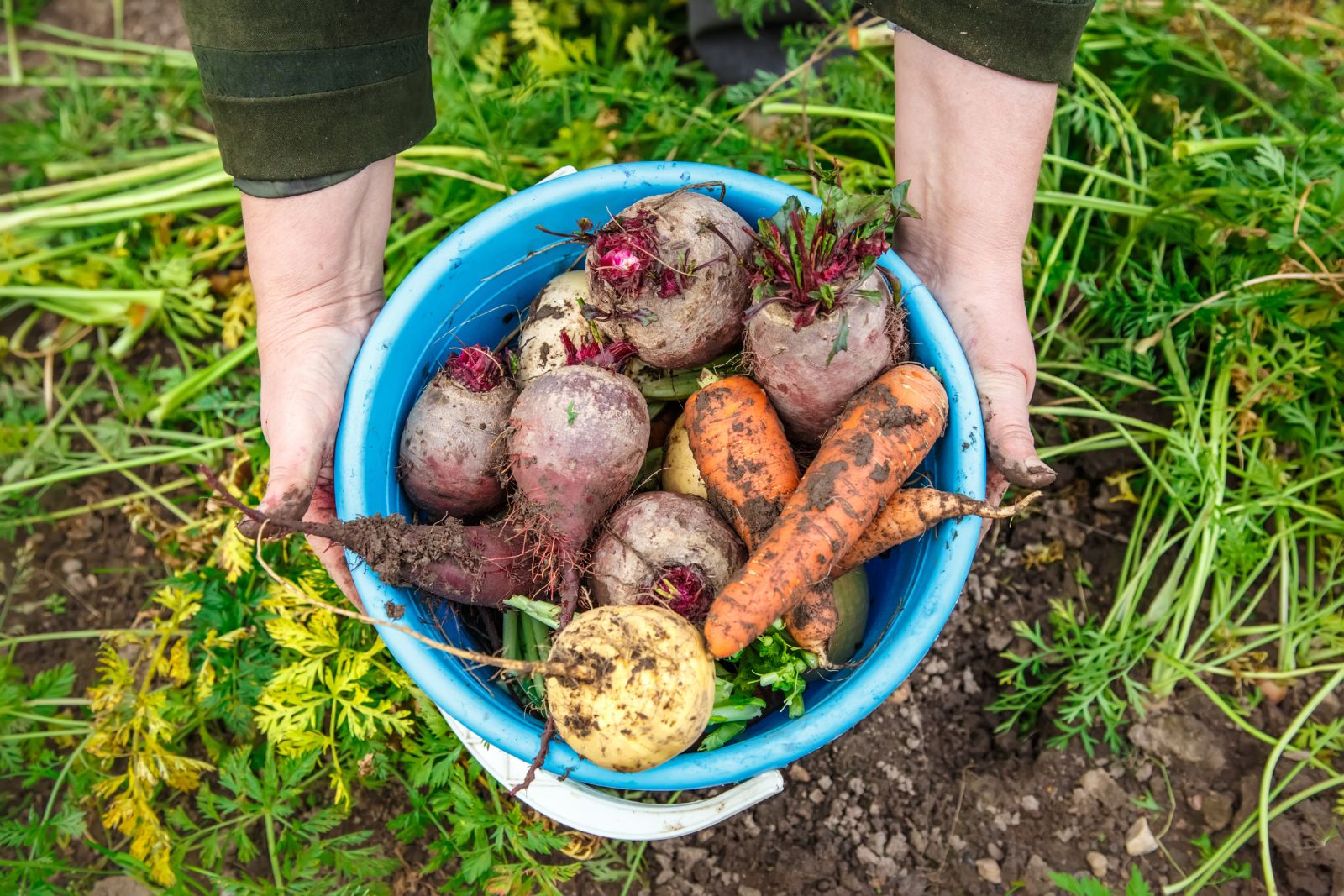
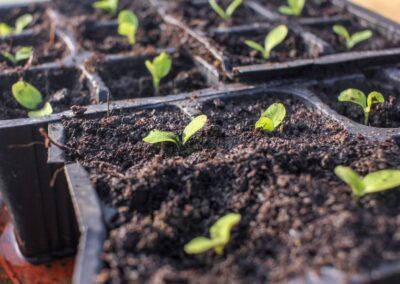
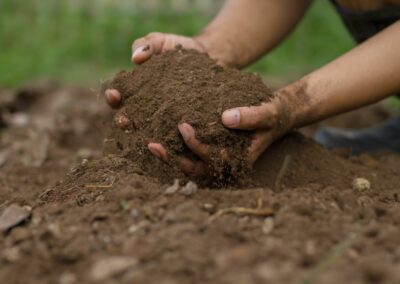
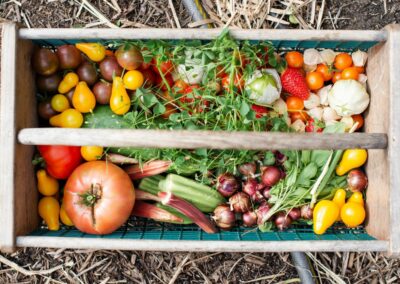
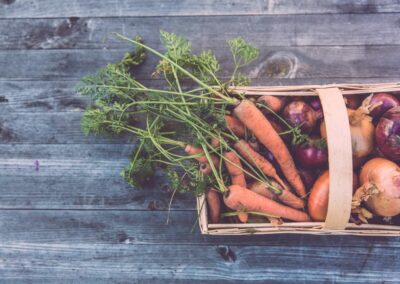
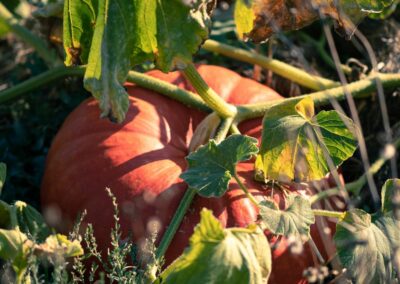
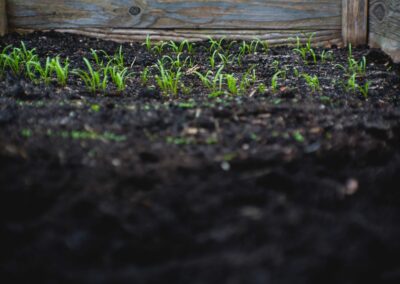




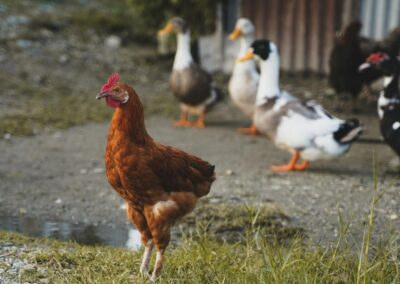
To achieve self-sufficiency, grow nutrient-dense vegetables like tomatoes, carrots, potatoes, and leafy greens that are easy to harvest and store.
Visit: https://howtogrowveges.com/how-to-grow-celery/